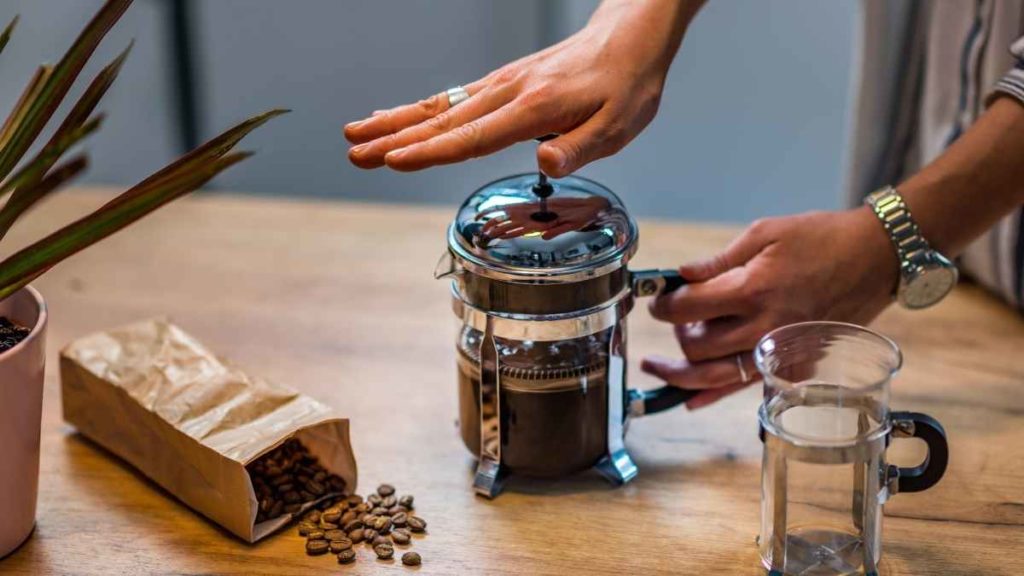How to Make Coffee Less Acidic
Coffee is one of the best beverages, especially if you need some extra push early in the morning. However, some coffee lovers have sensitive stomachs and react badly to coffee. In fact, acidic coffee can cause heartburn or even ulcers. If this happens to you, it is time for a change!
We have listed below the tips on how to make coffee less acidic, as well as further details about how acidity affects your body.
Half and Half can also help to decrease the overall acidity.
How to Know If Your Coffee Is Acidic
If you are drinking a cup of coffee with milk, then there will be an additional layer of creaminess that makes the drink more creamy than usual. This means that the coffee has become slightly more acidic. This is because when milk gets heated up, its proteins get denatured, which causes them to release their acids into the liquid. These acids may not affect everyone, but they do affect people who suffer from gastric reflux disease. So, here are the tips on how to make your coffee less acidic.
How to Make Coffee Less Acidic
1. Use Cold Brew
Drinking cold brew coffee is made by steeping ground beans at room temperature for several hours. It does not require any heat, so it keeps all the nutrients intact. You should use cold-brewed coffee instead of regular hot brewed coffee since it contains fewer acids. Also, it tastes better too.
The cold brewing or brewing process also helps reduce caffeine levels; hence it is also picked by people with acid reflux or GERD. Too much caffeine level on the body is known to increase blood pressure and stress hormones like cortisol. When we consume caffeinated drinks such as coffee, tea, cola, etc., our bodies produce adrenaline and other chemicals called catecholamines. They help us cope with stressful situations. But overuse of these substances leads to increased anxiety and hypertension. Therefore, consuming a cold brew coffee reduces the amount of caffeine and acidity present in the beverage.


2. Use Paper Filters
Paper filters remove unwanted particles from water while retaining most of the flavor profile. Hence, using paper filter coffee makers is recommended for those who want to enjoy a good-tasting cup of coffee without worrying about the health issues caused due to excessive consumption of coffee. Paper filters can also absorb and reduce excess oil and caffeine during the filtering process. Thus, making the coffee less acidic.
3. Use Low-Acid Coffee Beans
Low-acid beans contain lower amounts of chlorogenic acids compared to high-acidity ones. CGAs are responsible for causing gastrointestinal problems, including indigestion, bloating, gas, nausea, diarrhea, constipation, and abdominal pain. High-acid coffee beans tend to irritate the digestive system. To avoid this problem, choose low-acid beans whenever possible.
Most of the time, low-acid coffee beans are usually homegrown, processed in more roasting time, have a full flavor, and have extracted the outer layer of the coffee beans.
4. Use Acid Reducer
Using an Acid reducer in your cup of coffee will help neutralize the chemical reaction and formation. It can also reduce the acid level in coffee without affecting the full flavor. If you can find some in your local store, make sure to reduce 90% of acid to prevent acid reflux or heartburn. So, if you have a sensitive stomach and drink coffee every day, you should get this one. It is the most effective way!
5. Use Dark Roast Coffee
Dark roast coffee tends to have higher concentrations of antioxidants and polyphenols. The darker roasted coffee contains more antioxidants than light roast varieties. In addition, dark roasted coffee has been shown to improve cognitive function. Importantly, dark roast coffee grounds do not go excessive processing, thus there are no chemical reactions in them. Less chemical reactions equate to less acidity in coffee. Also, this kind of coffee contains less caffeine, so it is safe for you.
6. Shorten the Brew Time
Shortening the brewing time of your coffee makes it less acidic because the longer the brewing time, the greater the chance that the coffee will be exposed to heat which increases its pH level. However, shorter brewing times may result in a bitter taste. You need to experiment on how long does it take for you to reach the desired taste. For example, in a French press, it is best to let it steep for 3 minutes before adding hot water. This allows extracting maximum flavors out of the coffee bean.
In addition, this method works best when used on drip machines. You just need to adjust the timer accordingly.
7. Mix Hard Water
Mixing hard water into your cup of coffee helps to decrease the amount of acid in coffee by reducing the concentration of calcium ions in the water. Calcium ion binds with carbon dioxide molecules in the brewed coffee, resulting in increased levels of CO2 in the beverage. As we know, CO2 causes the body’s natural defense mechanism to release gastric juices, leading to burping and other symptoms associated with gastroesophageal reflux disease. By mixing hard water into your regular brew, you can significantly reduce these effects.
Meanwhile, soft water does not possess minerals. Therefore, it cannot bind with CO2 as well. Thus, it results in lower amounts of CO2 being released from the coffee during digestion.
8. Use Finely Ground Coffee
Grinding low-acid coffee beans finely reduces their surface area, making it easier for the coffee to absorb oxygen. Oxygenation leads to oxidation, which produces acids such as acetic acid and lactic acid content. These acids cause the unpleasant sourness found in many types of coffee. Finer grind coffee beans also improve extraction efficiency than coarse grind. When grinding coarsely ground beans, only about half of the oils in coffee are extracted. Also, the finer you grind, the less acidic your coffee grounds have.
9. Use Baking Soda
Baking soda is a pH9 alkaline substance. It neutralizes the coffee acidity level. If you add baking soda to your coffee grounds before the brewing time, it absorbs some of the acidic compounds in the coffee. But do not freak out, you just need a pinch or at least 1/4 teaspoon of it before drinking. After the brewing methods, the remaining acids remain trapped inside the baking soda. So, they will not affect your sensitive stomachs anymore.
10. Do Not Use Thermos
Thermoses keep beverages warm for hours without losing any flavor. They work great for keeping tea cold but unfortunately, they do not work so well for acidic coffee. The reason why is simple; thermoses use aluminum foil to insulate the contents. Aluminum has an affinity towards iron, which means that it attracts iron particles present in the coffee. Over time, those iron particles oxidize and produce free radicals, causing oxidative damage to proteins and lipids. Not just that, it also increases acidity level because prolonged hotness in the coffee will force the oils to release excess acids.
How to Manage Acid Reflux From Acidic Coffee
If you want to avoid getting acid reflux issues due to excessive consumption of acidic coffee, here are some tips to help you manage acid reflux caused by acidic coffee.
1. Drink More Green Tea
Green tea contains antioxidants called polyphenols, which protect cells against oxidative stress. This antioxidant property makes green tea one of the most effective remedies for heartburn and GERD.
2. Avoid Drinking Too Much Coffee
Drinking coffee may trigger the risk of developing ulcers. In fact, studies show that people who drink more than two cups of coffee per day are twice as likely to develop peptic ulcers compared to non-coffee drinkers.
Try drinking Jasmine Tea or switching to a Chai.
3. Add Acid Reducers
Choose either of the things we listed above to reduce the acidity level in coffee. However, if none of them works for your health issues, then try adding these:
Which coffee is least acidic
A specially blended coffee that is designed to be less acidic is the best way to minimize any stomach upset. The Mellow Belly Coffee from Lucy Jo is a good choice, using a low acid coffee bean. Plus there are some instant coffee brans that are a low acid coffee.
What makes coffee less acidic
You can make coffee less acidic (and therefore more palatable) by simply adding soy or milk. Calcium within the milk will neutralize acids in the coffee, making it smoother tasting. Milk is effective with darker roasts, which tend to be lower in acidity to start with.
Coffee is less acidic when it has been roasted for longer periods of time. The longer the roast, the lower the acidity. This is because the roasting process removes some of the acids from the beans.
What Are the Benefits of Less Acidic Coffee
There are many benefits associated with less acid in coffee. Here is what you get from having fewer acids in coffee:
Conclusion
The bottom line is that drinking acidic coffee does not have any positive effects at all. It only triggers the production of stomach acid in the body. If you really need caffeine, go ahead and enjoy your coffee. But do not forget about its negative side effects. Try switching to cold brew coffee, dark roast, or prolong the roasting process if possible. Or else, switch to other caffeinated products such as energy drinks or sodas.